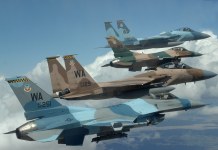Iran-India relations have never been better before. India lays utmost importance to its relations with Iran and oil is not the only reason. India, Iran and Russia will meet next month to discuss the operation of a 7,200 km trade and transport corridor that offers an economical and faster alternative to the traditional route through the Suez Canal. EurAsian Times analyses the article of PressTV.
- India, Iran, Afghanistan Meet To Discuss Trade Via Chabahar Port
- India, China, Turkey Will Resist US Sanctions on Iranian Oil Imports: Tehran
The International North-South Transport Corridor (INSTC), a chain of sea and rail routes, will link the Indian Ocean and the Persian Gulf via Iran to Russia and North Europe. The project initiated due to Chinese ambitious One Belt One Road initiative. Within Iran, the two routes overlap in a potential boon to future businesses.
India has been actively wooing Iran, given the highest value it attaches to the route and Tehran has been receptive. Once operational, the corridor will allow India to send its goods to Bandar Abbas in Iran by sea, from where they will be shipped to Iran’s Bandar Anzali on the Caspian Sea by road. Next, they will be shipped to Astrakhan in Russia and transported into Europe by rail.
The route will cut the time and cost of delivering goods by about 30% to more than 40%. Compared with the Suez Canal, the corridor will diminish the transit time between Mumbai and Moscow to about 20 days. The expected capacity of the corridor is 20 to 30 million tonnes of goods per year.
- India Will Continue To Buy Iranian Oil and Defy the US
- How Iran-Afghanistan Trade Corridor Benefits Both India and China?
An Indian official statement stated: Russia and Iran will hold a trilateral meeting on November 23 to make the route operational soon, Indian media reported Tuesday. “The INSTC is the shortest multimodal transportation route linking the Indian Ocean and the Persian Gulf via Iran to Russia and North-Europe,” India’s Ministry of Commerce and Industry said in the statement.
To access resource-rich Central Asia, India has to route its goods either through China, Europe or Iran. The routes through China and Europe are long, expensive and time consuming, while Iran presents the most viable one.
The first dry run of the INSTC was conducted in August 2014 and the second in April 2017. India is attempting to leverage the strategic Chabahar port in southeast Iran to link with the INSTC. The country has committed $500 million to Chabahar that it is constructing mainly to crack open a trade and transport route to landlocked Afghanistan.
For landlocked Afghanistan, the corridor means opening the way to billions of dollars in trade and cutting the country’s dependence on foreigners for aid as well as stemming the illicit opium trade.
More News at EurAsian Times
- Indian Military Base in Sabang can Strangle China at the Strait of Malacca
- Major Spat Between India and Pakistan Over Free Balochistan Office In Delhi
- Saudi Arabia Halts All Oil Shipments After Yemen Missile Attack
- Saudi Crown Prince Unravels Deep Secrets Behind Wahhabism and the Yemen War





